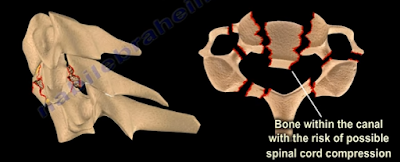Lactic acid is a byproduct of anaerobic metabolism (Metabolism
without oxygen). Normally, the cells use anaerobic metabolism and it breaks
down the glucose to form energy. Normally, the cells use oxygen available to
breakdown the glucose and produce ATP. This occurs when you have oxygen. If the
body does not have the oxygen, it then converts the metabolism to an anaerobic
metabolism. The end product is lactic acid. If the body is acidic, and the pH
drops, this means that there is a tissue ischemia. If we take the glucose
(CCCCCC), and break it down, you will have two pyruvates—each attached to a
CCC. That’s not a lot of energy and the pyruvate is a mild acid.
There are different ways to get more energy, such as going
to the mitochondria to use the oxygen and produce more ATP. When we break down
the glucose to produce energy in the presence of oxygen, so the glucose will
split into two separate three carbon molecules called the pyruvate and produces
ATP. If you don’t have oxygen, then the pyruvate will be attached to hydrogen
atoms, which is H+ (proton that is an acid). If you are acidotic and a sick
patient, you will have a lot of floating hydrogen atoms and a lot of floating
protons.
The pyruvate will attach to the free hydrogen protons. The
H+ pyruvate is called lactic acid. It is a pyruvate that is holding onto
hydrogen. The lactic acid is the end product of anaerobic metabolism.
Now, with a base deficit, as the number of protons goes up,
which is hydrogen, then the pH will go down and the patient will become
acidotic. The body uses bicarbonate as a buffer if the pH goes down. There are
a lot of protons within the body and the bicarbonate will be exhausted in this
situation. The bicarbonate goes down because we are combining it with the
protons. When the bicarbonate goes down, this becomes metabolic acidosis.
When you combine the bicarbonate with the protons, this will
make carbonic acid (H2CO3), rather than HCO3-,
which is bicarbonate. The carbonic acid can give water (H2O), and CO2.
The lactic acid will give out the protons and be buffered by the bicarbonate,
leaving lactic acid. When this occurs, the bicarbonate will go down, and this
will be the base deficit.
When checking if a patient has been resuscitated, you can
check in several ways
The two ways this is asked on exams:
- Base deficit from -2 to +2
- Serum lactate level (normal is less than 2.5, some sources use normal less than 2)







